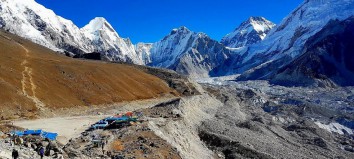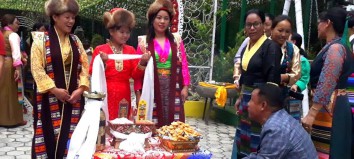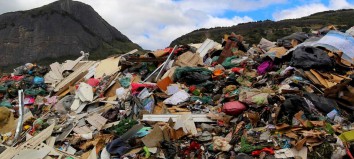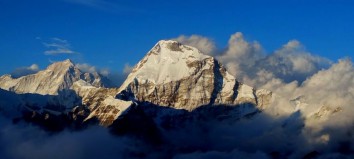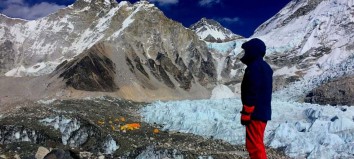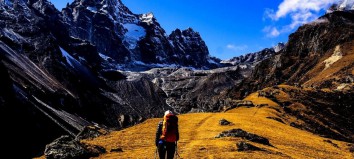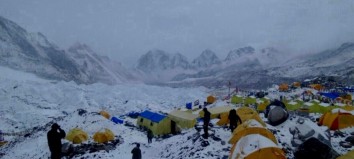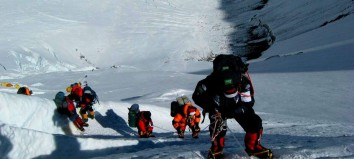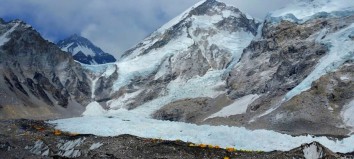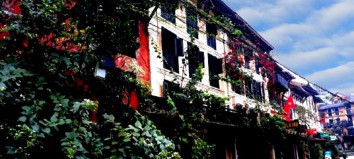Khaptad National Park
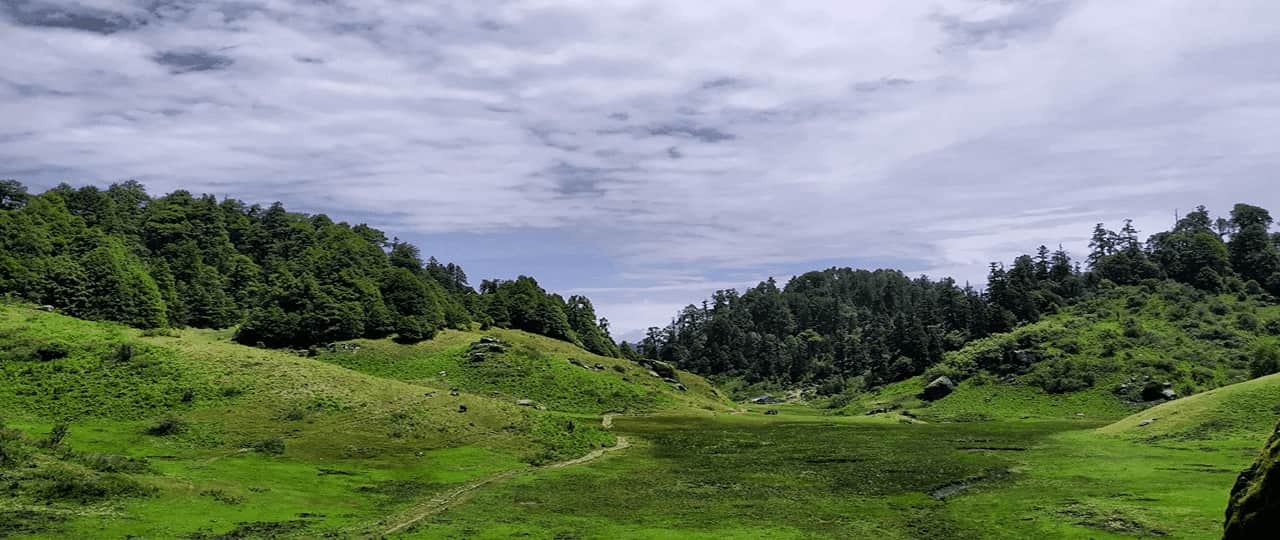
Khaptad National park Features:
The park is spectacular and unique in nature. It offers a challenging yet rewarding experience unlike any other protected area in Nepal. Its remoteness has been kept pristine and untouched by the outside world. Several majestic sight and experiences in the park offer a timeless appeal for any nature enthusiast.
Famous sites with religious as well and cultural importance incorporated by the park invite thousands of pilgrims each year. Among others, Khaptad Baba Ashram, Triveni and Sahasra Linga are the most popular places of interest. Khaptad Baba Ashram is located close to the park headquarter which is named after the late Khaptad Swami who came to the area in 1940’s ashram was used for meditation. He spent some 50 years as a hermit and became a renowned spiritual saint among Hinduism followers.
On the way to the park headquarter, at the confluence of three rivers, known as Triveni a lord Shiva temple is located. The panorama of Triveni is amazing with other historical temples. Ganga Dashahara, a holy performance, is marked here during Jestha Purnima (Full moon day). Many pilgrims make a holy visit to Triveni to Worship the God Shiva on this occasion.
Another religious site is Sahshra Linga at 3276 m. above sea level which is the highest point in the park. Other religious areas include Ganesh temple, Nagdhunga, and Kedardhunga. As these areas are considered as places for meditation and tranquility, they should not be disturbed. Tobacco products, alcohol, and animal sacrifice are prohibited in these sites.
A small museum at the headquarter introduces visitors to the park. Close to the headquarter a view tower offers a beautiful landscape of Api-Saipal Himalayan range. On the other direction, the vast green mid-hills of Nepal can be seen closer.
The park encompasses 22 open patches of grasslands (Patans) up to the horizon, leaving a small space for the forests. These patans are on gently rolling hills. In summer, they support local livelihood by offering ample grazing ground for cattle. Patans remain full of flowers from June to August. Higher elevations of KNP get under snow in winter.
Major Flora & Fauna
Corresponding to the variety of terrain of the park. It is rich in flora and fauna diversity. The flora of the park is divided into three basic vegetation zones: subtropical, temperate, and sub-alpine. In lower altitudes (1000-2000m.), subtropical vegetation dominates the landscape. Forest mainly consists of temperate vegetation that dominates the landscape. Here, forests are comprised of lower temperate mixed broad-leaved species (Lindera nacusau, Cinnamomum Tamala. etc). Temperate mixed evergreen species (Spruce, Fir, Hemlock Oak, etc,) and upper temperate broad-leaved species (Aesculus indicia, maple, etc). The Khaptad plateau, above 2900 m. is dominated by sub-alpine vegetation Fir, Oak, and Rhododendron are the major species here.
The park is reported to have 266 bird species when migratory birds join the residential ones. It supports about 175 breeding bird species. Some of the common ones are the impeyan pheasant (Danphe), Nepal’s national bird and many types of partridges, flycatchers, bulbuls, cuckoos, and eagles. A wide variety of butterflies, moths, and insects are also a pride in the Khaptad’s ecosystem.
Best season for Khaptad National Park
The seasons of spring (March to May) and autumn (October to November) are the best time to visit the park. During these seasons temperatures are pleasant for trekkers. The monsoon begins in June and lasts until September making the paths muddy and slippery. From December to February, the chilling wind brings snow.
Major attractions
- Khaptad Baba Ashram
- Triveni temple
- Ganesh temple, Nagdunga and Kedardhunga
- Ganga Dashahara Mela (Aholy performance on Jestha Purnima)
- Musk Deer, Leopard cat and Himalayan Monal
- Panoramic view of Khaptad patan.
- Accommodation
Currently, there are no lodges or a hotel in the park. Trekkers must be self-sufficient, food, fuel, and all other suppliers.
How to get to the Park
The best way to reach the park is to fly to Dhangadi. From there lacal buses can be taken to silgadhi, Doti. From Silgadhi one has to hike for about 4 hrs to reach the park’s entrance Jigrana and another 7- 8 hrs walking from Jhigrana to the park headquarter.
Other options are Dhangadi to Bajhang Chainpur by bus one day, Chainpur to Kalukheti 3 hrs walk, lokhada to Khaptad headquarter 3 hrs walk.
Park Regulations to follow or things to remember
- An entry fee of NRs 3,000 (for foreigners) and NRs 1,500 (for SAARC) and an additional 13% VAT has to be paid at Parks entrance gate per person. The entry permit will be valid for single entry only.
- Valid Entry permits are available from the National Parks ticket counter at NEPAL Tourism Board, Bhirkuti Mandap Kathmandu or Park entrance points Jhigrana Doti or lokhada Bajhang.
- Camping inside the park should be done only at designated areas.
- Travel within the park between sunset and sunrise is prohibited.
- Don’t remove damage wild plants and animals, Flora and Fauna are fully protected and must not be disturbed.
- Rubbish must be packed out, buried or disposed off in designated areas.
- Carry out nonbiodegradable items such as plastic bags & bottles.
- Get special permits for documentary/ filming from the Department of National parks and Wildlife Conservation.
- Do respect cultural and religious sites.
